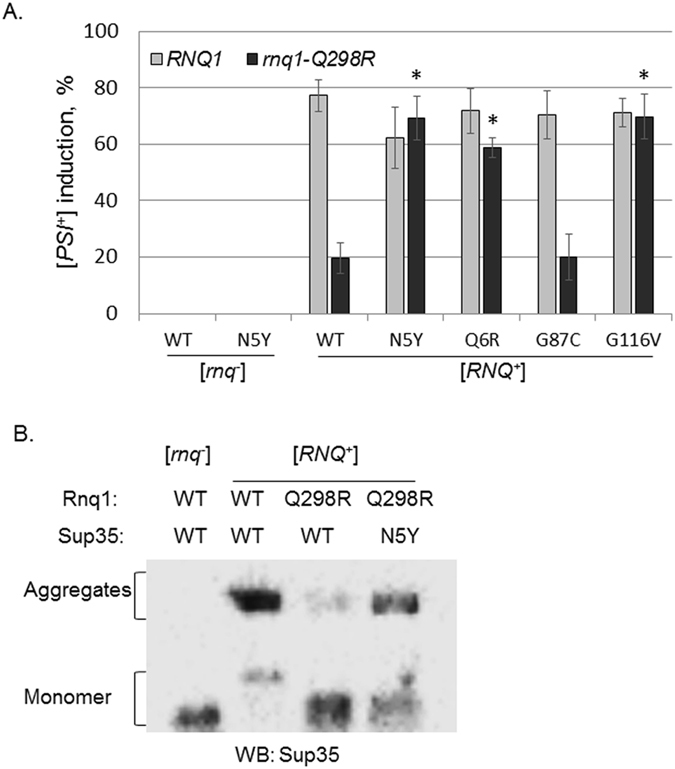Figure 5.

Sup35-N5Y strongly rescues the [PSI +] induction defect. (A) [PSI +] induction experiments demonstrate that three Sup35 mutants restore [PSI +] formation to nearly WT levels in rnq1-Q298R cells. These mutations do not increase [PSI +] formation in a RNQ1 genetic background. Horizontal axis labels denote SUP35 genetic status. The [rnq −] control cells express RNQ1 and SUP35. More than 13,000 colonies were assessed over five biological replicates. Error bars represent mean ± s.e.m. The “*” symbols represent a significant difference between [PSI +] induction with WT Sup35 in rnq1-Q298R versus induction with the indicated sup35 mutants, p < 0.005. (B) Boiled gel assays allow separate migration of monomeric and aggregated materials, confirming that Sup35 aggregation is reduced in the SUP35 rnq1-Q298R background relative to SUP35 RNQ1 cells. Sup35 aggregation is restored in sup35-N5Y rnq1-Q298R cells. We attribute the slightly aberrant monomer bands as an artifact of the experimental procedure, as samples were unboiled (and likely non-denatured) as per the protocol, and Sup35 may shed unevenly from aggregates in addition to the soluble pool. Western blot is a representative image from three independent experiments.
